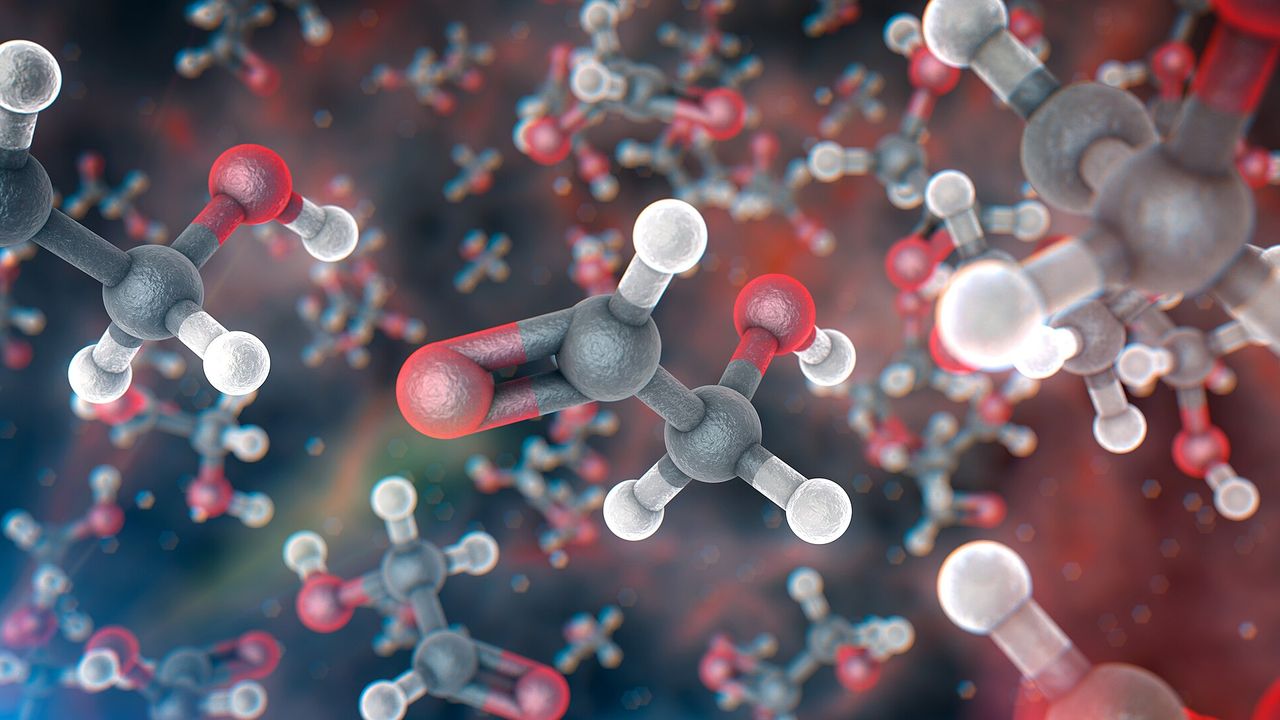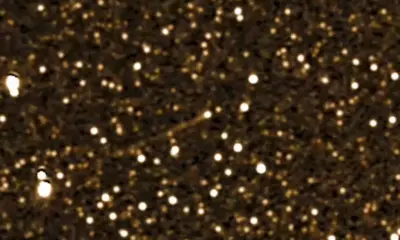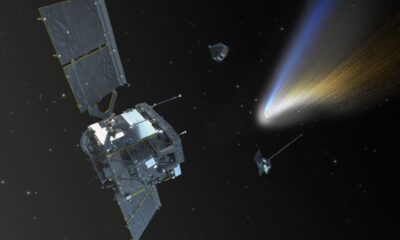Science
New Research Reveals Space Radiation’s Role in Enceladus’ Organic Molecules

New laboratory research suggests that some organic molecules previously detected in the plumes of Saturn’s moon Enceladus may be produced by natural radiation rather than originating from the moon’s subsurface ocean. This significant finding complicates the evaluation of the astrobiological relevance of these compounds.
Enceladus conceals a global ocean beneath its icy crust. Material from this liquid reservoir is expelled into space through cracks in the ice near the south pole, forming plumes of dust-sized ice particles that can extend for hundreds of kilometers. Although most of this material returns to the surface, some remains in orbit, contributing to Saturn’s E ring, the planet’s outermost and widest ring. Between 2005 and 2015, NASA’s Cassini spacecraft made numerous passes through these plumes, detecting a variety of organic molecules. Initially, this discovery was interpreted as evidence of a chemically rich and potentially habitable environment beneath the ice.
To investigate the role of space radiation, a research team led by planetary scientist Grace Richards, a postdoctoral researcher at the National Institute for Astrophysics in Rome, simulated conditions near Enceladus’s surface. They created a mixture of water, carbon dioxide, methane, and ammonia—the main expected components of surface ice on Enceladus—cooled it to −200°C in a vacuum chamber, and bombarded it with water ions, a crucial element of the radiation environment surrounding the moon.
The radiation induced a series of chemical reactions that produced a variety of molecules, including carbon monoxide, cyanate, ammonium, and various alcohols, along with molecular precursors to amino acids such as formamide, acetylene, and acetaldehyde. The presence of these simple molecules indicates that similar reactions could occur on Enceladus due to radiation exposure.
Richards presented these findings at the Europlanet Science Congress–Division for Planetary Sciences Joint Meeting (EPSC-DPS 2025) in Helsinki, Finland. Alongside her coauthors, she published a detailed report in Planetary and Space Science.
Implications for Astrobiology
The new research raises critical questions about the origins of the organic molecules detected in Enceladus’s plumes. It remains unclear whether these compounds originate from the moon’s buried ocean, form in space, or develop close to the surface after the plumes exit the moon’s interior. While this finding does not rule out the possibility of a habitable ocean beneath the ice, Richards cautions against directly linking the presence of these molecules in the plumes to their origin and potential role as precursors to life.
“I don’t necessarily think that my experiments discredit anything to do with Enceladus’s habitability,” said Richards. “However, when you’re trying to infer this ocean composition from what you’re seeing in space, it’s important to understand all the processes that go into modifying this material.” These processes include phase changes, interactions with the moon’s ice walls, and exposure to the space environment.
Planetary scientist Alexis Bouquet from the French National Centre for Scientific Research (CNRS) emphasized the importance of simulating these environments in a laboratory setting. Such studies will be crucial in planning future missions to Enceladus and interpreting data from ongoing missions to Jupiter’s icy moons, including NASA’s Europa Clipper and the European Space Agency’s (ESA) JUICE (Jupiter Icy Moons Explorer), which will investigate Ganymede, Callisto, and Europa.
Bouquet noted, “The radiation chemistry for Europa or the Jovian moons in general is a big deal, a bigger deal than in Enceladus.”
Continuing Discoveries
As Richards’s work calls into question the origin of organic compounds around Enceladus, additional research continues to unveil more complex molecules. A recent analysis of data collected during a close flyby of Enceladus by the Cassini spacecraft in 2008, led by planetary scientist Nozair Khawaja from Freie Universität Berlin and the University of Stuttgart, identified new types of organic molecules emanating from the icy vents. These include ester and ether groups, as well as chains and cyclic species containing double bonds of oxygen and nitrogen.
On Earth, these molecules are critical components in the series of chemical reactions that ultimately lead to the formation of complex compounds necessary for life. While these organic molecules could have an inorganic origin, Khawaja stated, “they increase the habitability potential of Enceladus.” The findings were published in Nature Astronomy.
Khawaja’s analysis suggests that complex organic molecules are present in fresh ice grains that have just been expelled from the vents. During its final flyby, Cassini approached within 28 kilometers of Enceladus’s surface. Researchers modeled the plumes and the ice grains’ residence times in space, concluding that the ice grains sampled by Cassini did not remain in space for long, likely just “a few minutes.” This limited exposure raises questions about whether space radiation had sufficient time to produce the organic molecules Khawaja detected, given the short duration.
“Big grains coming from the surface full of organics? That is much harder to explain through radiation chemistry,” Bouquet remarked.
Both Richards’s and Khawaja’s studies highlight the intricate chemistry of Enceladus, reinforcing its status as a prime target in the search for extraterrestrial life or at least the building blocks of life. Enceladus possesses all three prerequisites for life: liquid water, an energy source, and a diverse array of chemical elements and molecules. Even if the subsurface ocean lies several kilometers beneath the ice close to the poles, the plumes provide a unique opportunity to sample an extraterrestrial liquid ocean.
Research is already underway for a potential ESA mission dedicated to Enceladus, which may include high-speed flybys through the plumes and possibly a lander at the south pole. Insights from both recent studies will guide researchers in designing instrumentation and interpreting future results.
“There is no better place to look for life than Enceladus,” Khawaja asserted.
-

 Technology5 months ago
Technology5 months agoDiscover the Top 10 Calorie Counting Apps of 2025
-

 Health3 months ago
Health3 months agoBella Hadid Shares Health Update After Treatment for Lyme Disease
-

 Health3 months ago
Health3 months agoErin Bates Shares Recovery Update Following Sepsis Complications
-

 Technology4 months ago
Technology4 months agoDiscover How to Reverse Image Search Using ChatGPT Effortlessly
-

 Technology1 month ago
Technology1 month agoDiscover 2025’s Top GPUs for Exceptional 4K Gaming Performance
-

 Technology3 months ago
Technology3 months agoElectric Moto Influencer Surronster Arrested in Tijuana
-

 Technology5 months ago
Technology5 months agoMeta Initiates $60B AI Data Center Expansion, Starting in Ohio
-

 Technology5 months ago
Technology5 months agoRecovering a Suspended TikTok Account: A Step-by-Step Guide
-

 Health5 months ago
Health5 months agoTested: Rab Firewall Mountain Jacket Survives Harsh Conditions
-

 Lifestyle5 months ago
Lifestyle5 months agoBelton Family Reunites After Daughter Survives Hill Country Floods
-

 Health3 months ago
Health3 months agoAnalysts Project Stronger Growth for Apple’s iPhone 17 Lineup
-

 Technology4 months ago
Technology4 months agoHarmonic Launches AI Chatbot App to Transform Mathematical Reasoning





















